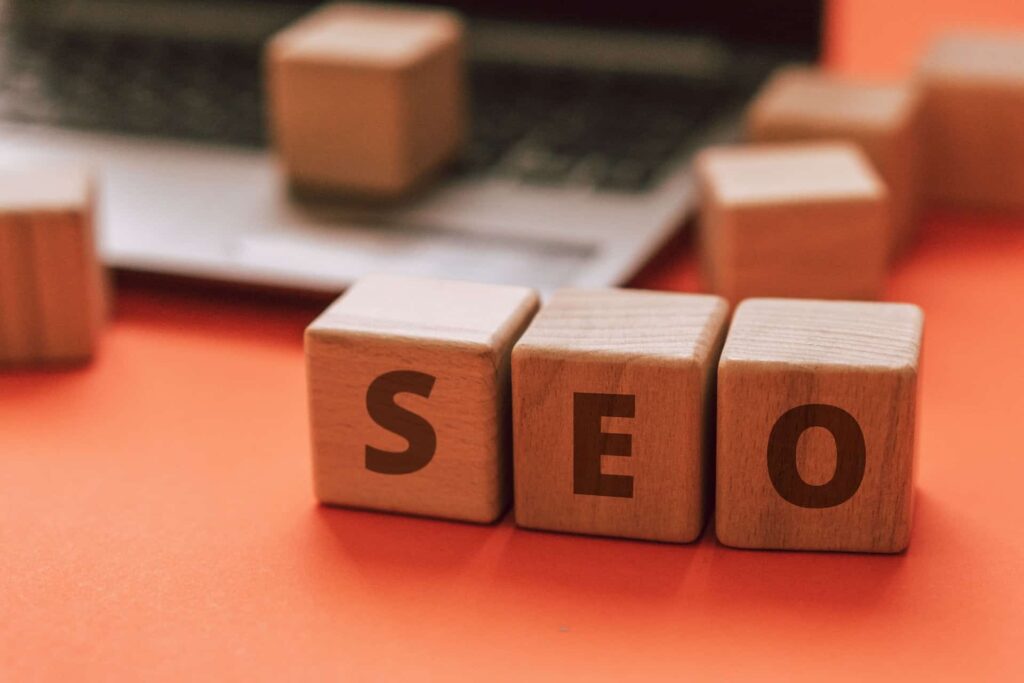As the internet continues to be a primary source of information and commerce, businesses and marketers strive to enhance their online visibility. Two key strategies they employ are search engine optimization (SEO) and search engine marketing (SEM). While both methods aim to increase sales and drive traffic to websites, they differ in their approaches.
SEO focuses on organic search results and long-term visibility, while SEM utilizes paid advertisements for immediate traffic gains. In this article, we will delve into the distinctions between SEO and SEM, including the search results they target, the timeframes for results, and the associated costs.
Related Link: On-Page SEO: The Ultimate Beginners Guide
What is SEO?
Search engine optimization (SEO) involves enhancing a website’s visibility in organic search results on major search engines. Algorithms utilized by search engines like Google and Bing prioritize relevant and high-quality content in their search results.
SEO strategies are employed to improve a website’s ranking in the hopes of appearing on the first page of search engine results pages (SERPs) for specific keywords or phrases.
Have questions about SEO or SEM? Contact Us today!

What is SEM?
Search engine marketing (SEM), on the other hand, employs paid advertisements to increase search engine visibility. SERPs display two types of content: organic results and paid advertisements. Paid ads are prominently featured at the top, side, or bottom of the SERPs. Organizations can pay to have their webpages appear in these prime locations to gain immediate visibility.
Key Differences between SEO and SEM
To determine the most effective strategy for their business needs, marketers must understand the key differences between SEO and SEM. These differences encompass the search results they target, the timeframes for delivering results, and the associated costs.
SEO and SEM Target Different Search Results
SEO primarily focuses on optimizing web pages to rank higher in organic search results. By following SEO best practices, marketers aim to create content that search engine algorithms favor.
These practices include incorporating relevant keywords into title tags, generating high-quality and well-organized content, optimizing for mobile devices, acquiring backlinks from external sites, and ensuring fast page loading times. SEO efforts are aimed at organically ranking on the first page of SERPs without having to pay for top placements.
In contrast, SEM relies on paid advertisements to secure prime positions in SERPs. Marketers bid on keywords or phrases related to their content, and their webpages automatically appear as sponsored links when users search for those terms.
SEM ads can take the form of search ads or shopping ads. Search ads allow organizations to pay-per-click (PPC) for top placements on SERPs, while shopping ads display product photos and link directly to e-commerce pages.
SEO Takes Longer to Deliver Results than SEM
One significant distinction between SEO and SEM is the timeframe required to see results. SEO is a long-term strategy that demands time and consistent effort. It can take anywhere from three months to two years to achieve substantial improvements in organic rankings.
SEO success relies on building a strong foundation of high-quality content, earning backlinks, and providing an excellent user experience. These efforts require time and patience to bear fruit.
In contrast, SEM offers immediate results. Once a well-crafted SEM campaign is launched, organizations can experience an influx of paid traffic within hours.
However, it is important to note that the success of an SEM campaign depends on proper research, the creation of high-quality landing pages, and ongoing optimization.
SEO Costs More than SEM in the Short-Term
While SEO does not require direct monetary investment like SEM, it demands significant time, effort, and resources. Organizations looking to improve their SEO may need to hire content writers, SEO specialists, or invest in SEO tools. Achieving organic visibility through SEO can be a costly upfront investment, as it takes time to yield a return on investment (ROI).
SEM, on the other hand, incurs costs through paid advertisements. Marketers using SEM must allocate a budget for their campaigns, as they pay for each click or engagement with their ads.
The cost of SEM can vary depending on factors such as keyword competitiveness, ad placement, and the overall campaign strategy. However, unlike SEO, the costs associated with SEM are immediate and measurable.
Related Link: Organic SEO vs. Paid Search: What’s the Difference?
The Advantages and Disadvantages of SEO
SEO offers several advantages that make it an essential long-term strategy for businesses:
- Sustainable Visibility: Achieving a high organic ranking through SEO can provide sustained visibility on search engine results pages. Once a website ranks well for relevant keywords, it can continue to attract organic traffic without additional costs.
- Credibility and Trust: Organic search results are perceived by users as more trustworthy and credible compared to paid ads. Ranking organically on the first page of SERPs can enhance a brand’s reputation and establish trust with potential customers.
- Cost-Effective in the Long Run: While SEO requires upfront investment, the long-term benefits can outweigh the initial costs. As organic traffic increases, businesses can reduce their reliance on paid advertising, resulting in long-term cost savings.
However, SEO also has its limitations and potential disadvantages:
- Time-Intensive: SEO is a time-consuming process that requires continuous optimization and monitoring. It can take months or even years to see significant improvements in organic rankings. Organizations must be patient and committed to the SEO process to reap its benefits.
- Algorithm Updates: Search engine algorithms are constantly evolving, and updates can impact organic rankings. Marketers must stay updated with algorithm changes and adjust their SEO strategies accordingly to maintain their visibility.
- Intense Competition: As SEO becomes increasingly popular, competition for top rankings becomes fiercer. It can be challenging to outrank established competitors with well-established online presence and strong SEO strategies.
The Advantages and Disadvantages of SEM
SEM offers immediate results and provides businesses with the following advantages:
- Instant Visibility: With SEM, businesses can quickly gain visibility on search engine results pages through paid ads. This immediate exposure can be beneficial for new websites or time-sensitive campaigns.
- Targeted Advertising: SEM allows precise targeting based on keywords, demographics, locations, and other relevant parameters. This targeting ensures that ads reach the desired audience, increasing the likelihood of conversions.
- Measurable Results: SEM provides detailed analytics and tracking capabilities, allowing marketers to measure the effectiveness of their campaigns accurately. They can monitor impressions, clicks, conversions, and return on ad spend (ROAS) to optimize their strategies.
However, SEM also has its limitations and potential disadvantages:
- Costly: SEM campaigns require a budget for ad placements, and costs can accumulate quickly, especially for competitive keywords. Small businesses with limited marketing budgets may find it challenging to sustain long-term SEM campaigns.
- Ad Fatigue: Users may develop ad fatigue and become less responsive to paid advertisements over time. Advertisements can also be perceived as less trustworthy compared to organic search results, leading to lower click-through rates.
- Dependency on Budget: Once the marketing budget is exhausted, the visibility and traffic generated by SEM campaigns decrease significantly. Continuous investment is required to maintain the desired level of visibility, making it less sustainable in the long run.
Want more information about SEO? Check out our blog for more!

Choosing the Right Strategy: SEO, SEM, or Both?
In most cases, a comprehensive marketing strategy would include both SEO and SEM. The two approaches can work together synergistically to maximize visibility, traffic, and conversions. Here are a few scenarios to consider:
- Limited Budget: If an organization has a limited marketing budget, focusing on SEO initially can be a cost-effective strategy. By creating high-quality content, optimizing web pages, and building backlinks, businesses can lay a strong foundation for future organic growth.
- Quick Results: For businesses that require immediate results or have time-sensitive campaigns, SEM can provide the necessary visibility and traffic. Investing in paid advertisements can deliver immediate results and allow businesses to reach their target audience quickly.
- Targeted Campaigns: When businesses have specific target audiences or demographics they want to reach, SEM’s precise targeting capabilities can be highly effective. Marketers can tailor their ads based on keywords, locations, and other relevant parameters to ensure they reach the right audience.
- Competitive Industries: In highly competitive industries where it’s challenging to achieve organic rankings, SEM can provide a way to gain visibility and compete with established players. By investing in paid advertisements, businesses can bypass the competition and appear prominently on search engine results pages.
- Complementary Strategy: Combining SEO and SEM can create a comprehensive strategy that covers both short-term and long-term goals. While SEM delivers immediate visibility, SEO efforts can work in the background to improve organic rankings and reduce reliance on paid advertising in the future.
Ultimately, the choice between SEO and SEM depends on factors such as budget, timeline, industry competitiveness, and marketing objectives. It’s crucial to evaluate the unique needs and goals of the business to determine the most suitable strategy or a combination of both.
SEO vs SEM: Finding the Perfect Strategy for Your Business
SEO and SEM are distinct strategies that businesses can utilize to enhance their online visibility and drive traffic to their websites. SEO focuses on optimizing web pages for organic search results, offering long-term sustainability and credibility. On the other hand, SEM utilizes paid advertisements to gain immediate visibility and reach a targeted audience.
Both strategies have their advantages and disadvantages, and the decision to choose one or both depends on various factors. By understanding the differences and considering specific business needs, marketers can make informed decisions to maximize their online presence and achieve their marketing goals.
Related Link: How to Start a Blog that Gets MASSIVE Traffic
Last Updated on June 23, 2023 by Hilda Wong

